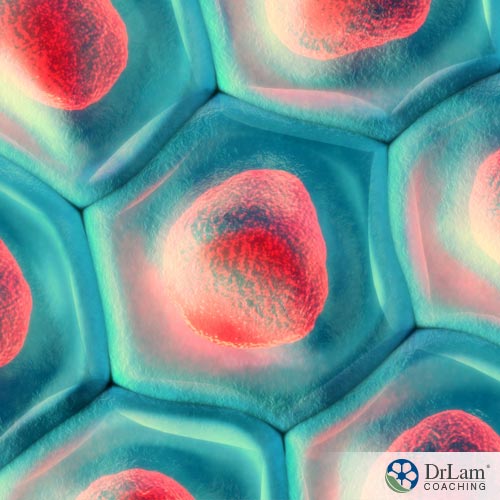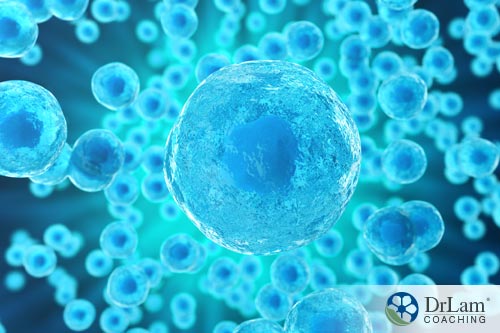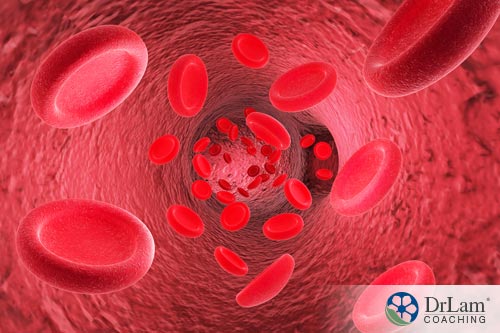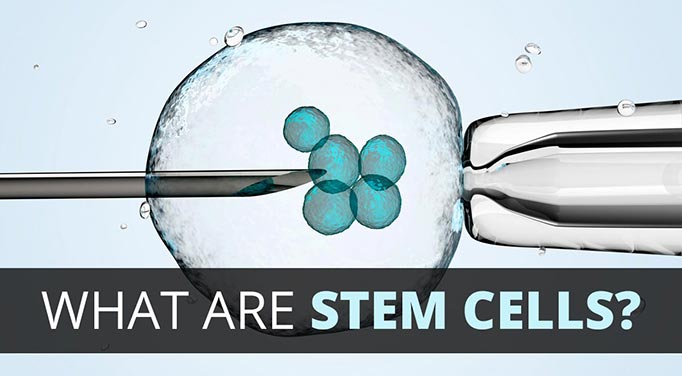Everybody has stem cells, but very few know what they are or how they can be used. The vital role they play in your body’s functioning and longevity is the current focus of research in many scientific circles.
 Basically, stem cells are a set of unindividualized cells that can be changed into other types of cells. It is this ability to change into different types of cells in your body that makes stem cells so unique and important. They can help you to regenerate other cells that have become diseased or damaged, thus keeping your body functioning well.
Basically, stem cells are a set of unindividualized cells that can be changed into other types of cells. It is this ability to change into different types of cells in your body that makes stem cells so unique and important. They can help you to regenerate other cells that have become diseased or damaged, thus keeping your body functioning well.
These special cells can remain active even after long periods of time by renewing themselves through division. In the early part of your life, when you’re still developing, these stem cells grow into different parts of your body. All during your life, they comprise a repair system replacing old cells in many body organs. Every time one of these cells divides, it can become another stem cell or just about any other kind of cell, depending on what’s needed.
Research has shown that these stem cells can be prompted to become tissue-specific or organ-specific cells with specific functions.
There are typically two major sources of stem cells. Embryonic stem cells come from human embryos in the blastocyst phase. Adult stem cells come from the tissue of adults, usually either fat or bone marrow.
Genetically reprogramming these adult stem cells transforms them into cells that function similarly to embryonic stem cells. This is valuable in terms of potential remediation of chronic illness or injuries because there is a significantly lessened possibility of rejection of the cells by the body. Unfortunately, this procedure is in its infancy, and the potential of negative effects in humans is unknown.
In animal studies, this type of genetically reprogrammed stem cell has proven beneficial for improving heart function in animals that suffered from heart problems.
Adult stem cells are found in many parts of the body. They remain in a quiet, non-dividing state for years until activated by the effects of disease or injury. At that time, they begin dividing without an end-point. This allows them to regenerate multiple cells from the organ in which they are found, eventually renewing the entire organ.
In the past some, researchers have believed these adult stem cells were limited to regenerating only the cells of the organ in which they were found. However, more recent research seems to refute this, providing evidence that these cells can develop into other types of cells as well.
Embryonic stem cells are found in the amniotic fluid that surrounds developing embryos and in the umbilical cord blood supply. They are capable of developing into many different types of cells.
 This type of cell is different from any other cell type in your body. There are three unique characteristics of stem cells that distinguish them from all others.
This type of cell is different from any other cell type in your body. There are three unique characteristics of stem cells that distinguish them from all others.
Stem cells proliferate. Essentially, this means they can reproduce themselves through cell division many times. Scientists have found that in the laboratory a group of stem cells can reproduce and become a population of millions of cells. These cells are capable of continuing self-renewal for a long time.
They are unspecialized. One of the foundational properties of these cells is their lack of any type of structure that prompts them to perform certain functions. Even though these cells can’t carry out any specific function in your body, they can be transformed into cells that can perform specialized functions.
They can be transformed. The process of changing from unspecialized cells into specialized cells is called differentiation. This is a unique ability that only stem cells have. The process involves several steps during which the cells become more and more specialized. The internal and external signals that begin and guide this process are not fully known yet. A cell’s genes control the internal signals, while external signals come from several sources: chemical secretions from other cells, physical contact with cells close by, and specific molecules in the cell’s microenvironment. These signals interact to prompt the cell’s DNA to acquire epigenetic marks that inhibit the expression of DNA in the cell and that can be passed on as the cell divides.
Their potential to differentiate into other cells in the body separates the types of stem cells.
Totipotent. This type of cell can change into any other type of cell in your body.
Pluripotent. These cells can change into almost any other type of cell. Embryonic stem cells fall into this category.
Multipotent. These cells can change into cells that are closely related. Most adult stem cells are believed to fall into this category.
Oligopotent. This type of cell can differentiate into a few types of cells.
Unipotent. These cells can divide into only their own type, but continue to replicate themselves.
Because stem cells have the ability to differentiate into many types of cells when triggered, they are of great interest to scientists, researchers, and healthcare professionals. Since every cell in your body grows from those first few cells as an embryo, stem cells from this source can be used to replace any cell in your body. They have the potential to renew any type of tissue when stimulated properly.
This may be the most important application of stem cells. With the need for replacement organs especially high and the supply so low, the use of stem cells to regenerate organs for replacement would be a great boon to medicine. In the same way, using these cells to renew skin for skin grafts would extremely useful for burn victims.
Human stem cells have been shown to reproduce blood vessels in laboratory mice. Researchers at Massachusetts General Hospital took vascular precursor cells from human-induced pluripotent stem cells and transferred them to the brains of mice. The human sources of the cells were from a group with Type 1 diabetes and another group that was healthy. Two weeks later, the implanted cells had grown into a network of new blood vessels. They worked as well as the mice’s natural vessels. This type of research strongly suggests this procedure could help in the remediation of cardiovascular or other vascular conditions in humans.
In brain-involved conditions such as Parkinson’s and Alzheimer’s, there is sometimes significant damage to brain cells. Embryonic stem cells have been shown through research to replenish damaged brain cells. This shows promise for the remediation of brain conditions.
The use of stem cells also shows promise for the regeneration of specialized cells in the pancreas to remediate diabetic conditions. Specialized cells grown in the laboratory may sometimes be used to replace damaged or diseased heart cells in those with heart problems.
 Bone marrow transplants containing adult stem cells have been used for years to deal with blood conditions such as leukemia, sickle cell anemia, and other blood diseases. A problem with this approach has been the invasiveness of obtaining and transplanting the bone marrow. Researchers have called for an umbilical cord blood bank to have for use for these conditions. The stem cells in this type of blood are readily differentiated into blood cells.
Bone marrow transplants containing adult stem cells have been used for years to deal with blood conditions such as leukemia, sickle cell anemia, and other blood diseases. A problem with this approach has been the invasiveness of obtaining and transplanting the bone marrow. Researchers have called for an umbilical cord blood bank to have for use for these conditions. The stem cells in this type of blood are readily differentiated into blood cells.
By observing how stem cells differentiate into other cells, scientists and researchers can learn how various diseases develop. This understanding can then lead to better therapies.
Stem cells have proven useful in determining how safely and how well new medications work. Thus far, this kind of research has been shown to be effective in cardiac toxicity evaluation. The first step is prompting these cells to differentiate into the specific cells for which the medications are being developed. In the future, this may become possible with stem cells. This kind of testing would allow researchers to determine not only whether the medications had any effect on the target cells, but also whether those cells were harmed by the medications.
© Copyright 2018 Michael Lam, M.D. All Rights Reserved.
Absolutely. Stem cells have been used successfully in dealing with osteoarthritis, repairing and/or replacing even whole organs, and show great promise in dealing with Alzheimer’s and Parkinson’s diseases along with alleviating heart problems that have led to damaged cells and replacing non-functioning pancreas cells. The number of possible applications is enormous.

